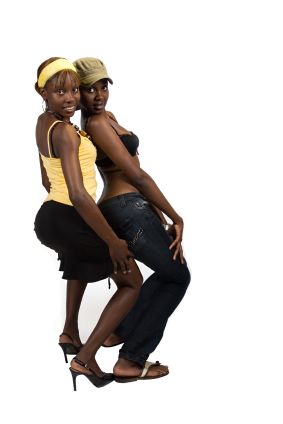Sex
Sex, Romance, and Gay, Lesbian, and Bisexual Youth
Gay Youth Need Opportunities to Safely Explore their Physical and Romantic Urges
Posted May 25, 2013

Last week a story emerged in various media outlets about an 18 year-old woman, Kaitlyn Hunt, who was being prosecuted for having a sexual relationship with a basketball teammate who was only 14. It is impossible to know for sure whether Ms. Hunt used force or coercion to get this young girl to have sex with her, but if she did not, as suggested by the reports, this is simply a case of an older teen having sex with a younger teen. In some ways the law treats Ms. Hunt as an adult whereas she can be criminally prosecuted for crime as an adult, can vote, and can serve in the military. However, she cannot buy alcohol or enter a nightclub that serves liquor, so she is in the twilight of adolescence but technically not fully an adult—which muddies the situation, if not legally at least morally.
Nevertheless, this case raises concerns about the way we as a society think about sex and sexual expression for gay, lesbian, and bisexual youths. First of all, is sex between adolescents and adults invariably abuse? Several years ago and with much controversy, a research article was published in which gay men recalled having (and at times seeking) sexual relationships with older men when they were teenagers. They looked back upon these experiences not as harmful, but as consensual and satisfying. Other gay men I have known clinically and personally have told me the same. However, I have also known too many men and women, gay and straight, who have been raped as children by adults and as a result, suffered deep and lasting psychological wounds. The main point here is that when considering sex between teenagers and adults it is important to avoid painting it all with the same brush--judging all such acts as rape or sexual assault especially when the youth and the young adult are not far from each other in age like Ms. Hunt and the girl with whom she was involved.
Secondly, this case points to the lack of safe opportunities for sexual and romantic experimentation for gay, lesbian, and bisexual youths. During several recent speaking engagements, I have been asked by school officials what to do about gay, bisexual boys, and transsexual or gender queer youth who are making “hook up” dates with older men who wait for them after school and whisk them away somewhere to presumably have sex. Recently I interviewed a 15 year-old research respondent who had been making arrangements over craigslist.org to have middle aged men come to his house when his parents weren’t home. Another 15 year-old respondent left his house in the middle of the night as his parents slept, to get into an adult man’s car. The first boy saw his encounters as consensual. The second boy simply wanted to kiss and touch a man’s body. Each of these cases underscores the importance of understanding the sexual needs and drives of gay youth as well as the paucity of safe opportunities to experiment and explore them.
For sure, adolescents take risks, and gay and bisexual youths are no exception. Boys will be boys, even if they are gay, with hormones reaching their peak in late adolescence, while girls’ of this age can be easily swept up in romantic fantasy. Heterosexual adolescents and young adults generally enjoy an extended period when they get to experiment with sexuality and relationships in relative safety. Dances, proms, social events, “spin the bottle,” sneaking into a secluded spot or behind a closed bedroom door offers the opportunities to explore. Straight youth can go to “first, second and third base” in a relatively safe environment where it is easier to retreat when things get too heated or when a supervising adult intrudes (or threatens to do so) allowing youth to back off in face-saving ways if things threaten to get out of hand. (“Hey, it’s not as though I don’t want to…but my Mom/Dad/Teacher might barge in and then we’d be busted.”) However, gay, lesbian, and bisexual youth are without such escape hatches --places these youth can safely experiment with relationships and sexuality are severely lacking. Thus, as they turn to craigslist.org and hook up phone apps to connect with adults in the face of too few alternatives, they are stepping into a world that is moving way too fast and is potentially dangerous. The previously mentioned young man who left his house in the middle of the night told me that all he had wanted to do was make out with another male and maybe do some mutual touching. However, the man he was with insisted on intercourse, for which the youth was not ready, and he was basically raped.
If there were more LGBT youth groups in schools and communities and more venues where youth could get connect with each other in supervised settings, I am willing to bet this type of activity would happen much less often. Youth would get together to try out their sexual and romantic impulses in safer environments at their own pace—and be able to back away when things got beyond their comfort zone.
But of course, this would mean accepting youths’ sexual feelings and impulses and seeing them as something to be nurtured and safeguarded while providing these kids safe spaces to experiment. I am guessing that despite the recent gains in LGBT rights such as legalization of same-sex marriage, the repeal of Don’t Ask, Don’t Tell, and allowing gay youth into the Boy Scouts, we as a society are not yet ready to take this step. Nevertheless, having such opportunities to explore their sexuality and romantic impulses would go a long way to enhance gay and lesbian well-being.


